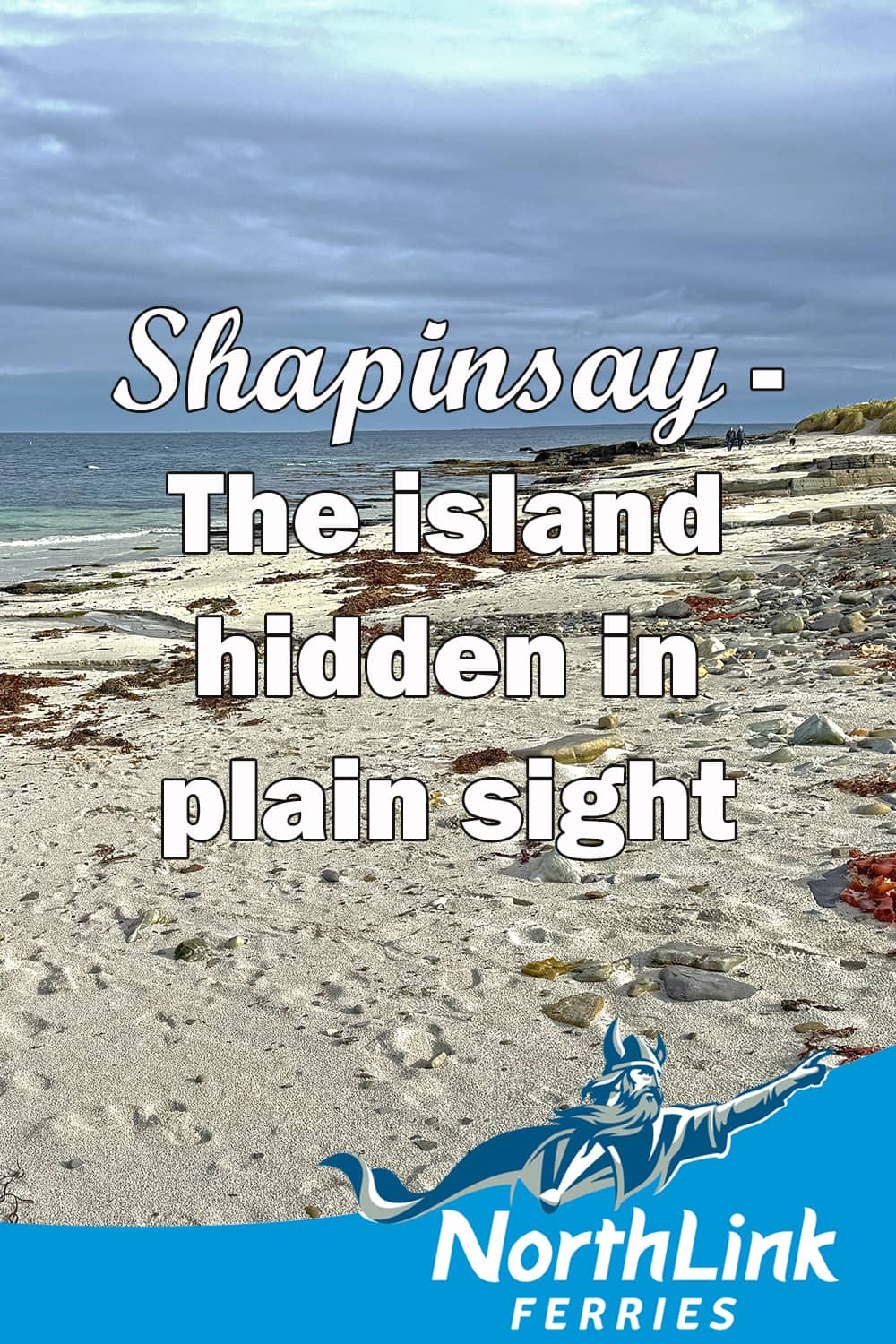Shapinsay – The island hidden in plain sight
Sometimes I’m convinced that the Northern Isles just magically conjure up yet another lovely island with fairy dust when I’m not looking. How else can I explain never having visited Shapinsay, which lies hidden in plain sight a half hour ferry hop from the Orcadian capital of Kirkwall? Orkney’s fairies have done a grand job too and I instantly see why so many creatives – from a sprinkling of artists through to the woman behind Scotland’s only tea plantation – have chosen to call this glorious island home.
Shapinsay is indeed a very special island with beautiful sweeping landscapes and over 70 sites of historic and cultural interest. It is clear to see why its community is so proud to call it home.
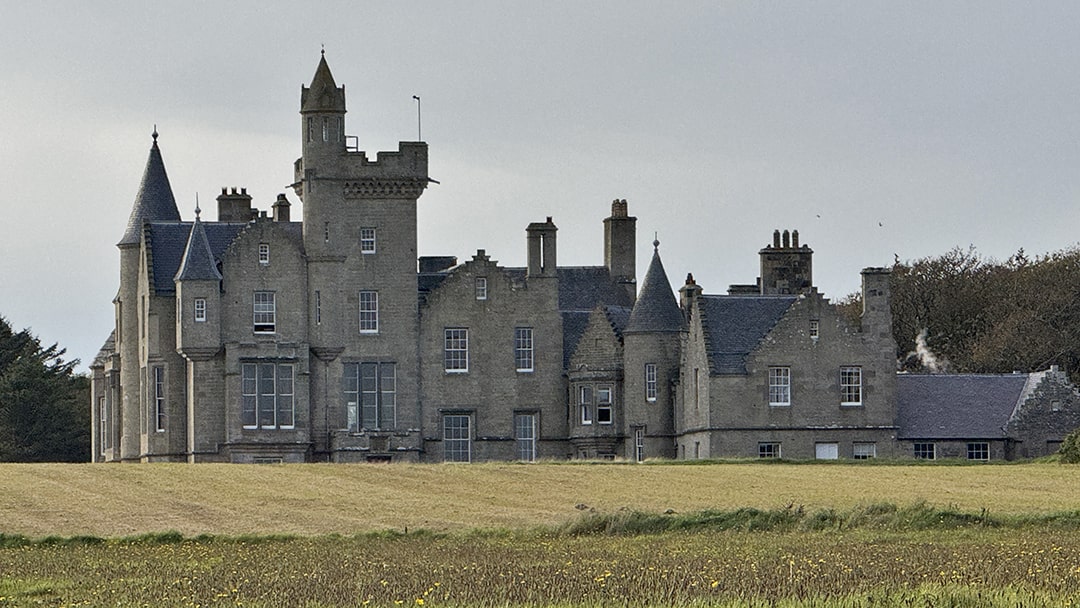
Coming in by ferry the grandest sight is Balfour Castle, a fortified country pile that imposes over the harbour entrance, its grounds patrolled by shaggy Highland cows. This is not the centre of the local community of 300 souls though. That honour goes to The Smithy, a wonderful oasis that was revamped in 2023.
On the upstairs level a museum and community space tell the colourful story of an isle that has drawn mankind here for millennia and whose pull is still palpable today. I learn how the Viking fleet gathered off Shapinsay before the epochal Battle of Largs in 1263, when the Scots finally sent the Norseman back hame tae think again. Well, sent hame from mainland Scotland and the Hebrides at least. The Norse influence is still deliciously alive in the Northern Isles.
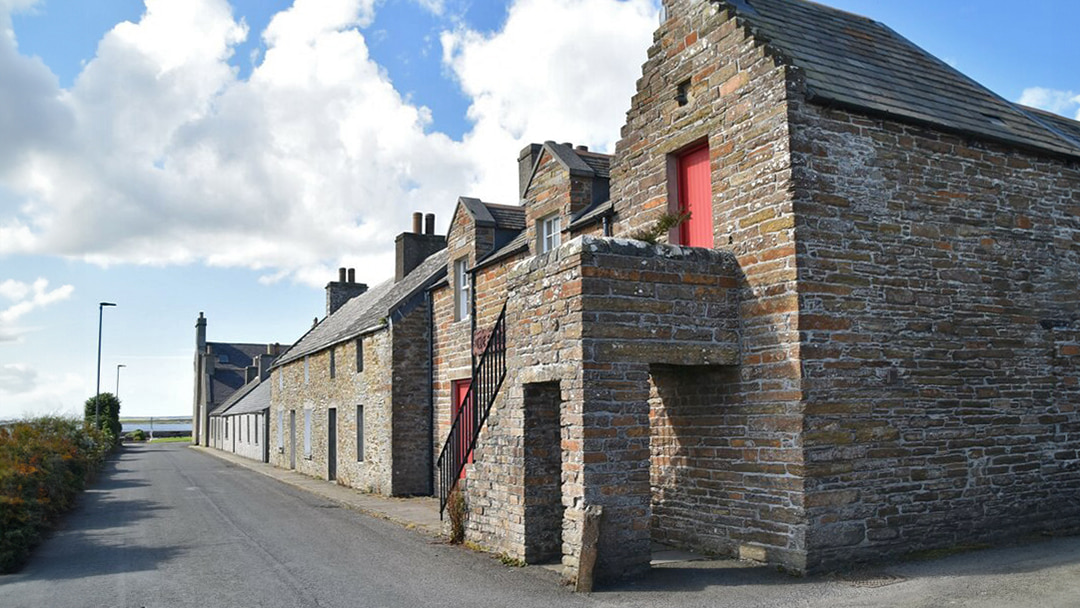
On the ground floor is the brilliant Smithy Restaurant, Café and Bar, where I tuck into a hearty soup followed by local beef from the island’s bountiful farmland. They serve great coffee too that comes with the warmth of genuine interest and friendliness from the staff that you just don’t find in faceless urban multinational cafes.
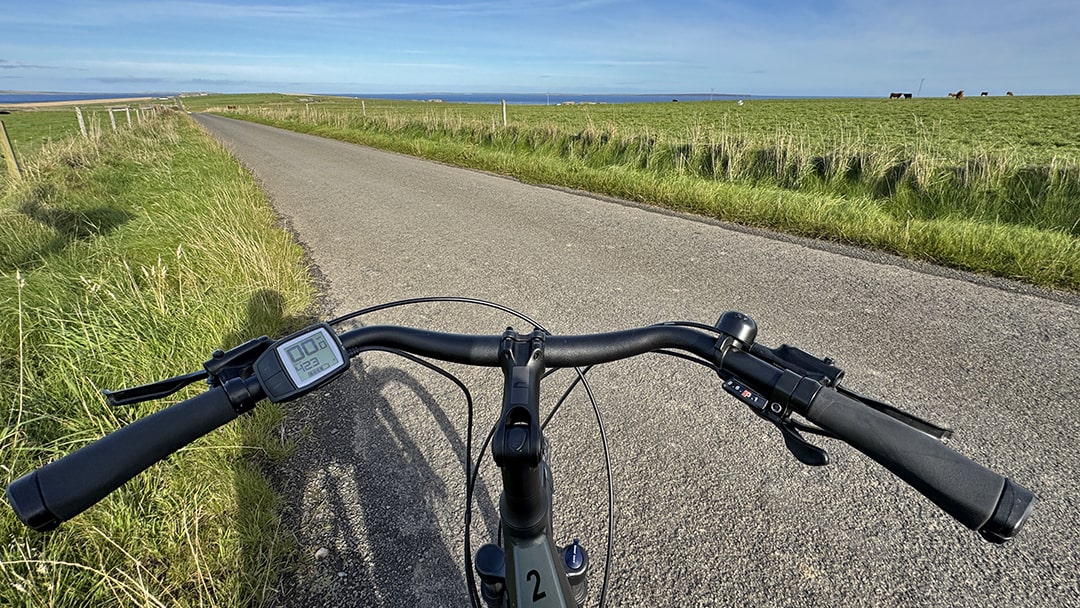
Just along the road, the community centre rents out self-service e-bikes – an ace idea! I pick one up to help me with my island adventures and soon I am off exploring this bijou island, Orkney’s eighth largest. Shapinsay proves quite undulating, so the power boost comes in handy and also means a never-ending sweep of panoramas keep opening up back to the mainland and out to other islands too. It’s like cycling around inside a gallery full of watercolour landscape paintings.

At the museum the staff had teasingly told me that Shapinsay boasts over 70 sites of historic and cultural interest. I set out across the hills on my e-bike in search of the most dramatic – Burroughston Broch. This is one of the best preserved brochs I’ve rambled around anywhere in Scotland and I have it all to myself. What I love most about brochs is how little we actually know about exactly why they were built. My own theories swirl around my head, heart and soul as I venture inside, the only sound the roar of the Atlantic surf crashing in just metres away.

In search of more community and more culture, I head for the home of a local artist who enthuses about life on Shapinsay. Gibraltarian former doctor Chimene Taylor’s work – fashioning glass sculptures from glass powder – is clearly inspired by the local landscapes. She talks of “changing seas and changing nature” and of the “rich plant life and rugged rocks”. Chimene also talks about something I hear mentioned a lot on Shapinsay – community.

Enjoying one of the local beaches I stumble across another artist, Tim Wootton. We fall easily into conversation – Shapinsay is not the sort of place you just push past people without passing the time of day. “When I’m away from Shapinsay a day feels like six days, a week feels like a month” he smiles, his eyes reflecting the surf breaking in front of us. “I just miss Shapinsay so much. Take today – I’ve just parked the car to walk my dog and instantly I’m on a gorgeous beach with views and the chance to see otters, puffins and orcas. I love it here and this year I’m planning to set up a permanent studio on Shapinsay.”
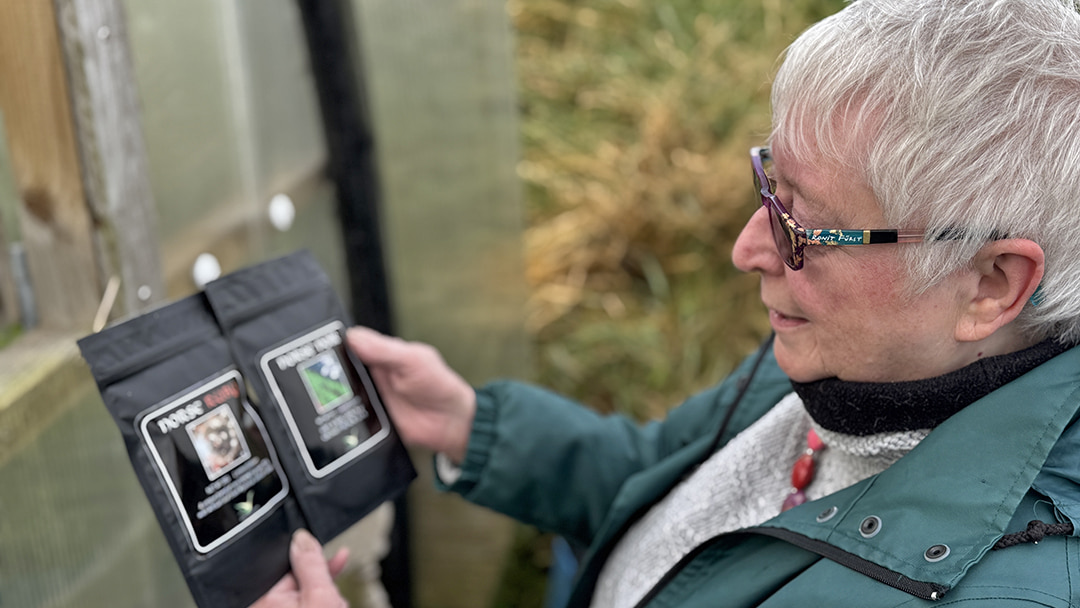
Perhaps the most surprising local creative is Lynne Collinson, who has set up Scotland’s only tea plantation. She proudly shows me around a sprawling site alive with tea plants growing happily here on Shapinsay. She talks of big plans to open a hostel on the site, to engage in community projects and to work more with local schools and colleges. Lynne talks passionately too about working with the island church and about the Reflective Routes initiative, with a wee book available that outlines wellbeing walks that encourage you to destress and contemplate. I find that easy on this magical, nourishing island.
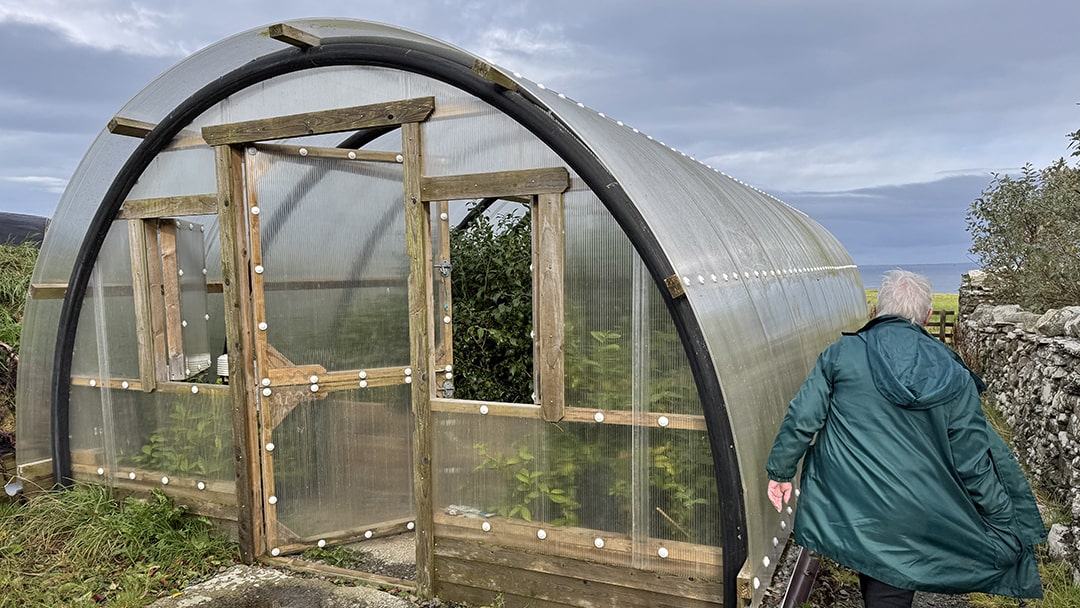
Lynne’s tea production hit a snag when the small business she was using to turn her leaves into tea stopped doing it, so she is pivoting into other uses for the tea leaves like selling them on to Orkney restaurants. Despite that setback Lynne remains impressively upbeat about Shapinsay: “It feels wonderfully peaceful here. You can hardly hear a dog bark never mind a car roaring by. But you can still see the Orkney mainland in the distance. And the big supermarkets are only half an hour away in Kirkwall.” Casting her arm over the emerald fields out to the rugged coast Lynne beams, “We really have the best of both worlds on this very special island we are so lucky to call home.”
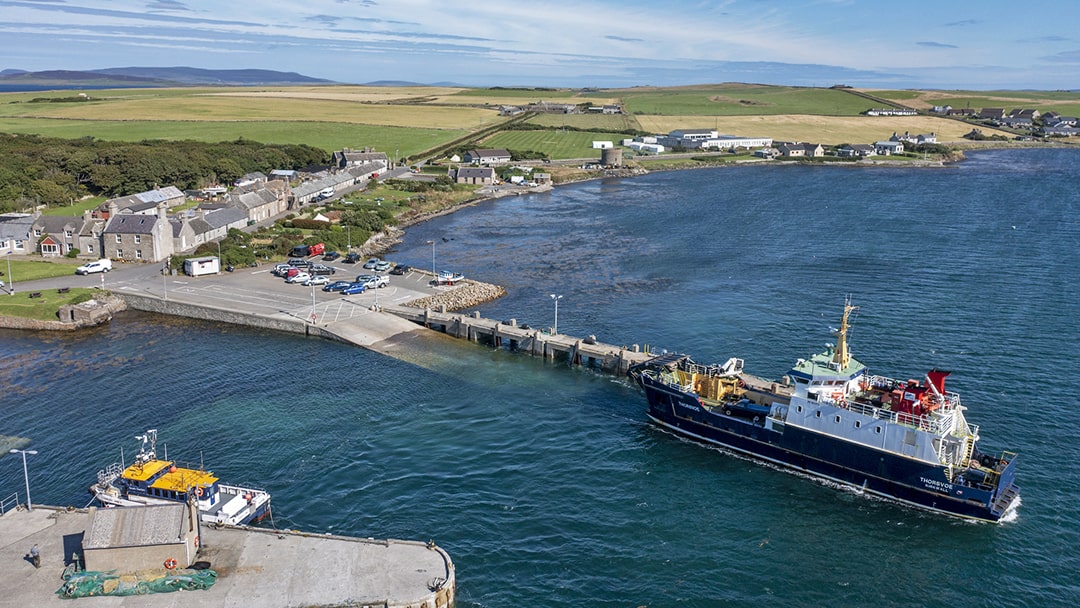
I cannot disagree with Lynne at all. How could I? Shapinsay is indeed a very special island, and I can see why its community is so proud to call it home. As I bounce away on the ferry past the hulk of Balfour Castle, I think of how very grateful I am to those Orcadian fairies who conjured up Shapinsay so close to Kirkwall when I was distracted in search of more distant isles.
 By Robin McKelvie
By Robin McKelvieRobin McKelvie is an award-winning travel writer and broadcaster who has been published in over 200 magazines and newspapers worldwide.
Pin it!